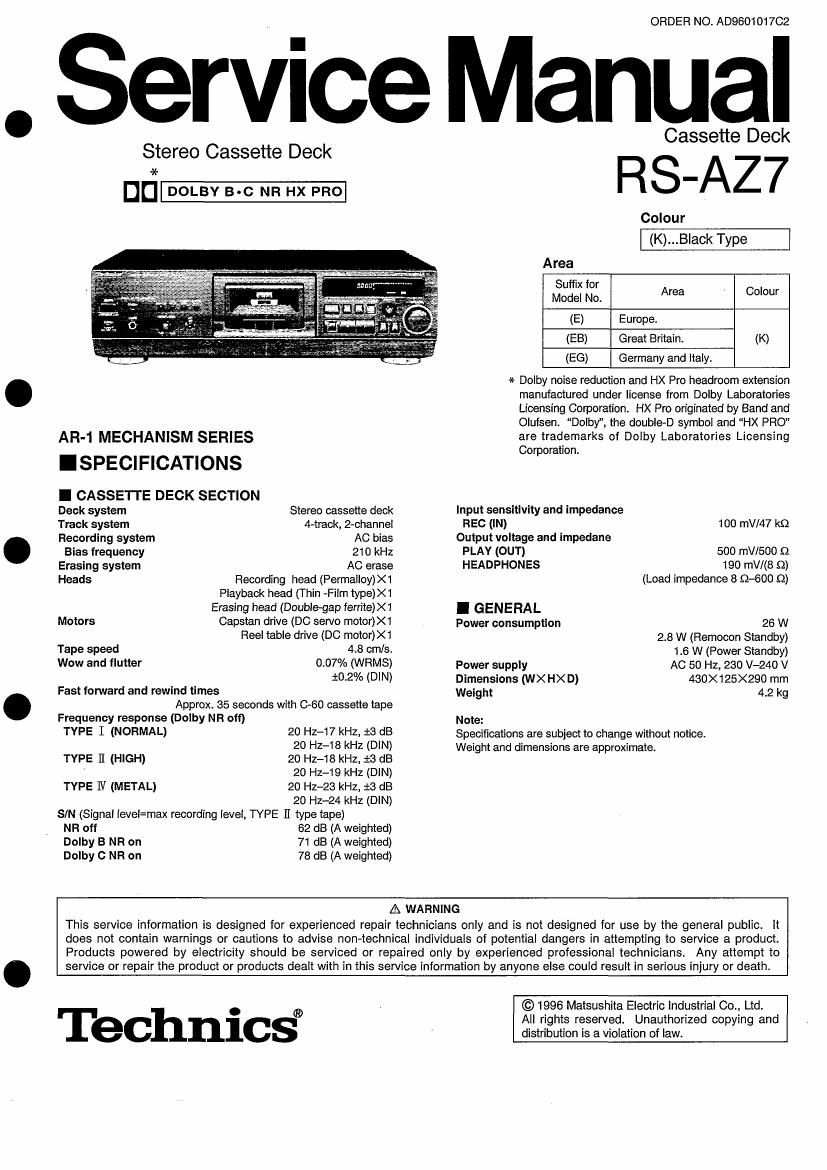Technics RSAZ 7 Service Manual
This is the 61 pages manual for Technics RSAZ 7 Service Manual.
Read or download the pdf for free. If you want to contribute, please upload pdfs to audioservicemanuals.wetransfer.com.
Page: 1 / 61
